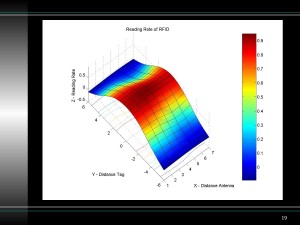RFID Facility Layout and Supply Chain
Implementation

With
the development of Radio Frequency Identification (RFID) techniques,
the advanced research and understanding are necessary to applied
techniques. I believe RFID is a powerful force in manufacture and
logistic evolution and deserves more attention than ever before. The
University of Nebraska - Lincoln's RfSCL
(RFID & Supply Chain Logistics) Laboratory has been a
fantastic environment to under and use RFID technology. As a member
of Rfscl lab, I conducted a series of RFID experiments to study and
help professors and fellow students on RFID related research.
For
example, one experiment I conducted as part of RfSCL was to test an
RFID warehouse portal door implementation system on the pallet level.

I
conducted experiments on testing RFID system performance under
simulated warehouse portal environments. I recorded the data for
trials and ran the test using a Design of Experiment (DOE)
statistical method. Meanwhile, based on the results and readability
of RFID facility, I proved some effective ways to increase reading
accuracy and RF facility layout options.
The
experiment used four variables, antenna position, tag placement,
reading range, and antenna selection, to test the performance and
reliability of the RFID system. After I compiled the initial results
I recommended specific RFID systems by factoring in cost of
implementation as a factor.
I wrote a
manuscript documenting my goal, methods, and results with Dr. Erick
Jones, Dr. Chistopher Chung, and Jinxiang Pei. The paper, "Using
Design of Experiments to Test RFID Portals," has been submitted
for publication. I supplied the majority of the work for all aspects
of the experiment.
The
full document, Using
Design of Experiments to Test RFID Portals,
is available in a 378
KB Microsoft Office Word Document
or as a 433
KB Adobe PDF file.
A presentation on the same material, RFID
Portal Test,
is available as a 961
KB Microsoft Office Powerpoint Document
or as a 2
MB Adobe PDF File.